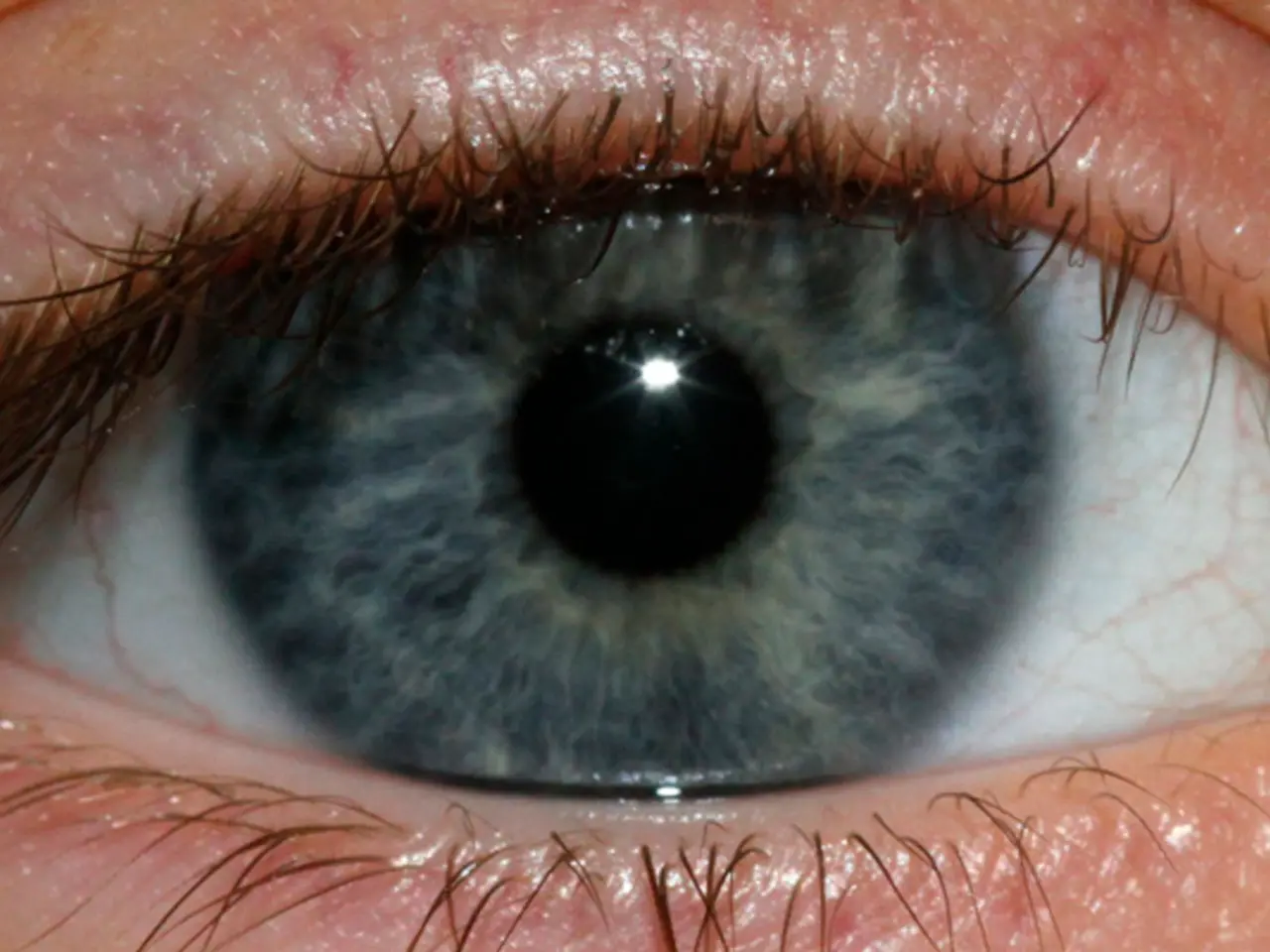Differences in Symptoms and Treatment Approaches between Thyroid Eye Disease in Children and Adults
Thyroid Eye Disease (TED), also known as Graves' ophthalmopathy, is an autoimmune disorder that primarily affects the eyes. While it is often associated with Graves' disease, it can also occur in individuals with Hashimoto's thyroiditis or those who are euthyroid [1].
TED is characterized by inflammation of the eye muscles and surrounding tissues, leading to symptoms such as dry eyes, redness, bulging eyes, and double vision [2]. The specific prevalence of TED in children is not well-documented, but it is known to be a common cause of hyperthyroidism in children [3]. In adults, TED is more common, particularly among those with Graves' disease, and women are more frequently affected [4].
Management of TED involves several strategies to address both the thyroid condition and the ocular symptoms. The primary focus is on early diagnosis and preventing long-term complications, with attaining euthyroidism being the priority in the course of treatment [1].
Antithyroid drugs (ATDs) are used to treat hyperthyroidism associated with Graves' disease. While they do not directly treat TED, maintaining normal thyroid function can help in managing the condition [2][3]. In children, ATDs are commonly used to manage hyperthyroidism, though relapse rates are high, and lifelong thyroid hormone replacement may be necessary after definitive treatments [3].
In moderate to severe active TED cases in adults, an aggressive treatment plan for immunosuppression is required, often involving pulse therapy of intravenous corticosteroids or alternative second-line interventions like orbital radiotherapy or immunomodulators/immunobiologicals [2]. Post-euthyroidism, ocular management in children often involves corticosteroids, with intravenous dosing preferred according to the Kahaly protocol [1].
In rare cases, orbital decompression or eyelid surgeries may be required for pediatric TED. Immunotherapy with drugs like Teprotumumab can be explored for adolescents after their growth ceases [1].
Common symptoms in children with TED include pain, foreign body sensation, hypersensitivity to light, excessive tearing, and, less frequently, diplopia. Surgical risks in younger children demonstrate an inverse relationship with age, with the highest complication rates observed in this age group [1].
Long-term monitoring remains essential in both children and adults to prevent relapse and address ocular complications effectively. Based on research, an estimated 33% to 67% of patients with juvenile Graves' disease develop TED, with higher prevalence in teenagers (68.2%) than in younger children (31.8%) [1].
Addressing the mental health of individuals should be a part of the management plan for TED, as patients often experience depression [1]. Psychological consultation should be recommended as part of the treatment plan due to the emotional well-being impact caused by the disease [1].
In conclusion, while TED is more prevalent in adults and associated with Graves' disease, management strategies often involve a combination of medications to control thyroid function, reduce inflammation, and address ocular symptoms directly. For children, the focus is on controlling hyperthyroidism with ATDs, though emerging immunomodulatory treatments may offer new options in the future.
- Mental health support should be considered during TED management due to potential depression experienced by patients.
- Psychological consultation is recommended as part of the treatment plan for TED due to its emotional impact.
- Thyroid Eye Disease (TED) can also occur in individuals with Hashimoto's thyroiditis, not just those with Graves' disease.
- Early diagnosis and prevention of long-term complications is a priority in TED management.
- The specific prevalence of TED in children is not well-documented, but it is a common cause of hyperthyroidism in this age group.
- In adults, TED is more common, particularly among those with Graves' disease, and women are more frequently affected.
- Antithyroid drugs (ATDs) are used to treat hyperthyroidism associated with Graves' disease.
- While ATDs don't directly treat TED, maintaining normal thyroid function can help in managing the condition.
- In moderate to severe active TED cases in adults, an aggressive treatment plan for immunosuppression is required.
- Pulse therapy of intravenous corticosteroids is often used in the aggressive treatment plan for TED.
- In severe TED cases, orbital radiotherapy or immunomodulators/immunobiologicals may be used as alternative second-line interventions.
- Post-euthyroidism, ocular management in children often involves corticosteroids.
- Intravenous dosing of corticosteroids, following the Kahaly protocol, is often used for ocular management in children.
- Rare cases of pediatric TED may require orbital decompression or eyelid surgeries.
- Immunotherapy with drugs like Teprotumumab can be explored for adolescents after their growth ceases.
- Common symptoms in children with TED include pain, foreign body sensation, hypersensitivity to light, excessive tearing, and diplopia.
- Surgical risks in younger children demonstrate an inverse relationship with age.
- Long-term monitoring remains essential in both children and adults to prevent relapse and address ocular complications effectively.
- An estimated 33% to 67% of patients with juvenile Graves' disease develop TED, with a higher prevalence in teenagers.
- The prevalence of TED is higher in adults compared to children.
- Thyroid conditions and ocular symptoms need to be addressed when managing TED.
- Various therapies and treatments, including medical-conditions and chronic diseases management, are part of the TED management strategy.
- Health-and-wellness practices, including skin-care, cardiovascular-health, respiratory-conditions, digestive-health, eye-health, hearing, and general health are essential considerations for TED patients.
- Mental-health, particularly mens-health and womens-health, should also be a focus during TED management.
- Therapies-and-treatments for neurological-disorders might be useful in managing TED-related symptoms.
- Climate-change, environmental-science, manufacturing, retail, entrepreneurship, transportation, leadership, diversity-and-inclusion, cybersecurity, lifestyle, fashion-and-beauty, food-and-drink, small-business, investing, wealth-management, home-and-garden, and venture-capital are all industries impacting quality of life and health well-being.
- banking-and-insurance, finance, energy, and real-estate are included in the broader financial landscape, which can affect the affordability of treatments and lifestyle choices for TED patients.
- The stock-market and private-equity can influence the development and accessibility of latest therapies-and-treatments for TED.
- gadgets, data-and-cloud-computing, technology, and artificial-intelligence are crucial in advancing scientific research and improving diagnostic and treatment methods for TED.
- Relationships, pets, travel, cars, and shopping are also aspects of patients' lives that can be impacted by TED.
- TED, as a chronic-disease, can affect various aspects of a patient's life, from their health to their financial security, personal relationships, and daily activities.





